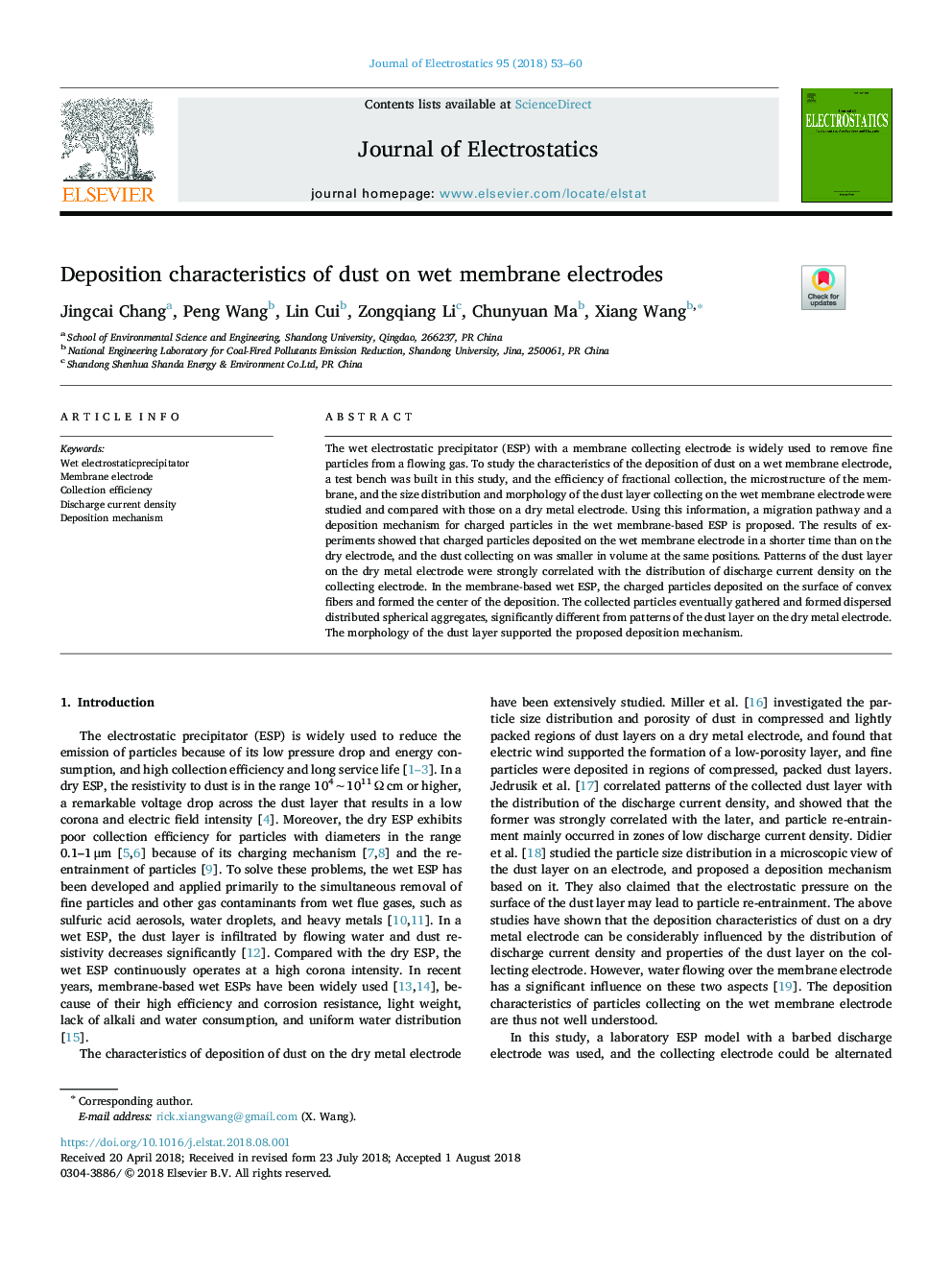| Article ID | Journal | Published Year | Pages | File Type |
|---|---|---|---|---|
| 9952705 | Journal of Electrostatics | 2018 | 8 Pages |
Abstract
The wet electrostatic precipitator (ESP) with a membrane collecting electrode is widely used to remove fine particles from a flowing gas. To study the characteristics of the deposition of dust on a wet membrane electrode, a test bench was built in this study, and the efficiency of fractional collection, the microstructure of the membrane, and the size distribution and morphology of the dust layer collecting on the wet membrane electrode were studied and compared with those on a dry metal electrode. Using this information, a migration pathway and a deposition mechanism for charged particles in the wet membrane-based ESP is proposed. The results of experiments showed that charged particles deposited on the wet membrane electrode in a shorter time than on the dry electrode, and the dust collecting on was smaller in volume at the same positions. Patterns of the dust layer on the dry metal electrode were strongly correlated with the distribution of discharge current density on the collecting electrode. In the membrane-based wet ESP, the charged particles deposited on the surface of convex fibers and formed the center of the deposition. The collected particles eventually gathered and formed dispersed distributed spherical aggregates, significantly different from patterns of the dust layer on the dry metal electrode. The morphology of the dust layer supported the proposed deposition mechanism.
Related Topics
Physical Sciences and Engineering
Engineering
Electrical and Electronic Engineering
Authors
Jingcai Chang, Peng Wang, Lin Cui, Zongqiang Li, Chunyuan Ma, Xiang Wang,
